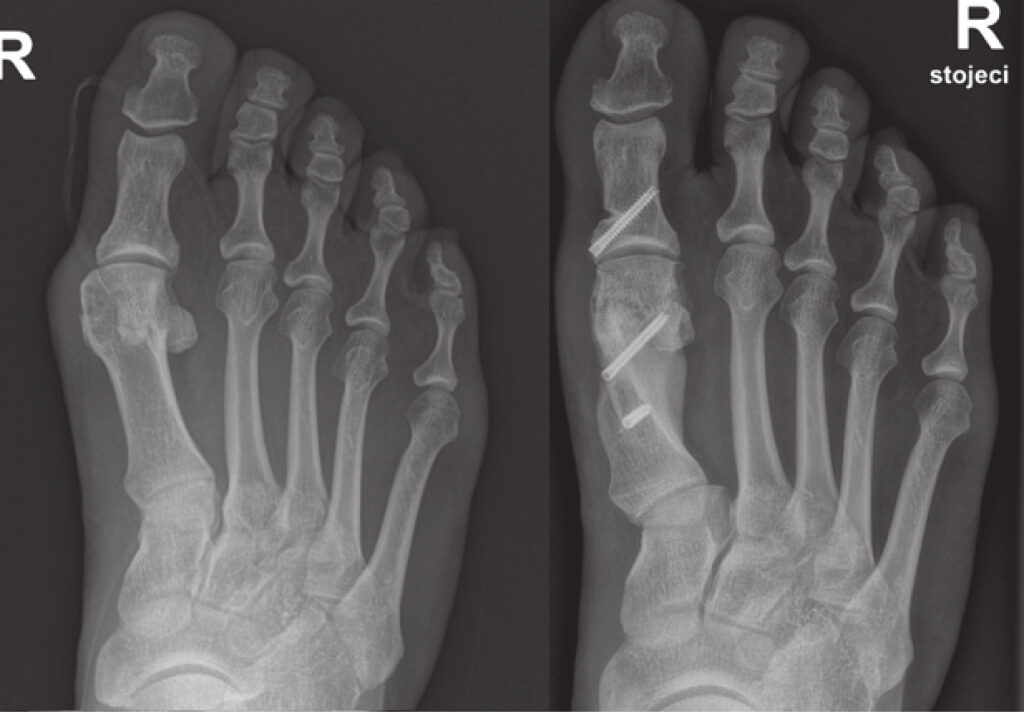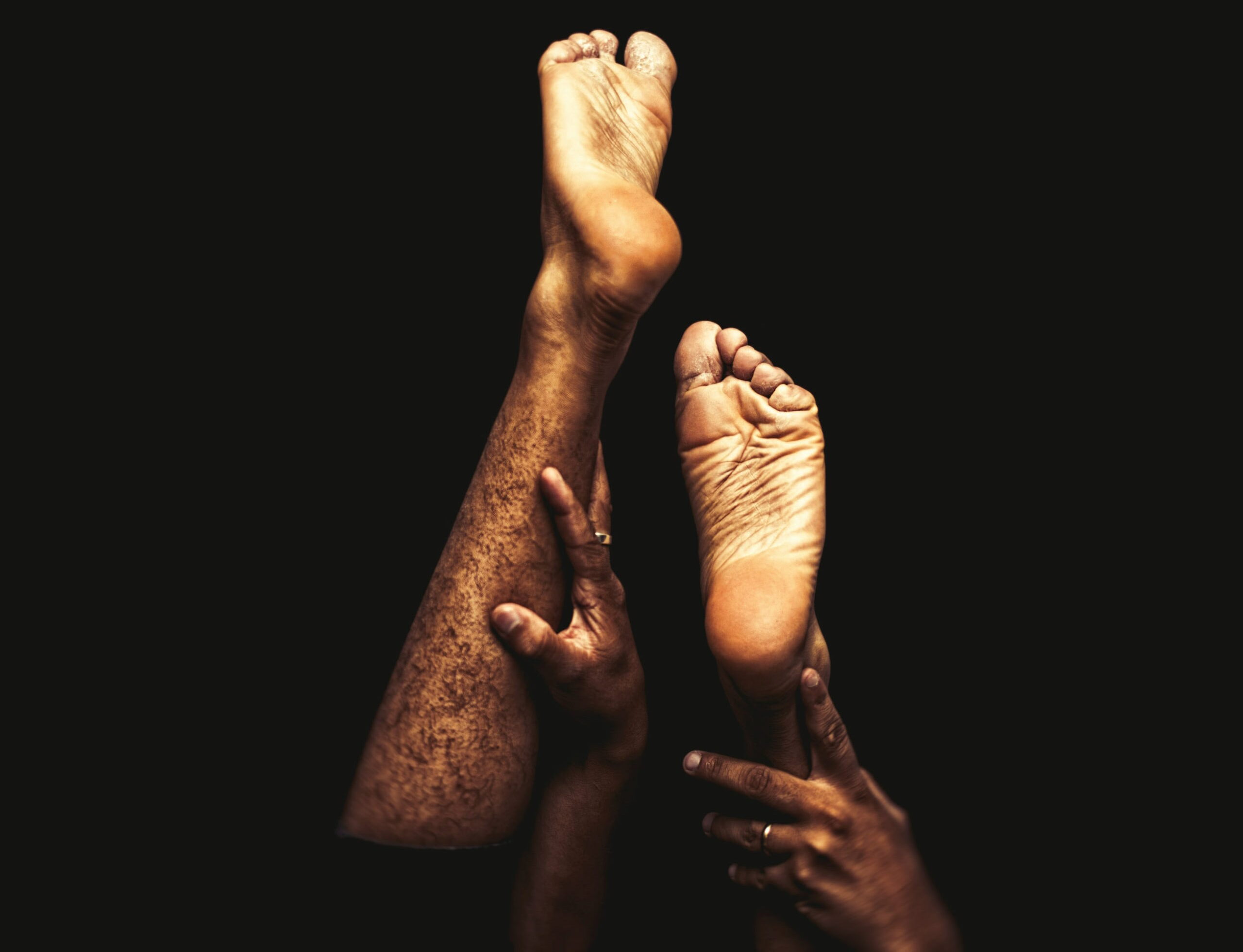Indications for surgery
Bunion correction surgery is typically recommended for individuals who:
- Experience persistent pain and discomfort that interferes with daily activities
- Find it challenging to wear shoes due to the size and shape of the bunion
- Have tried conservative treatments (e.g., orthotics, padding, and footwear adjustments) without success
- Suffer from severe deformities or complications, such as the overlapping of other toes, skin breakdown or difficulty walking
Due to the likelihood of swelling, presence of scars and the risk of the deformity returning, bunion correction is not recommended as a procedure to treat cosmetic concerns. Read more about the condition below:
What the surgery involves
The surgical procedure depends on the severity of the bunion and the underlying cause. Common approaches include:
Osteotomy
A surgical cut is made in the bone to realign the big toe. Variations include:
- Akin Osteotomy: Removes a small wedge of bone from the big toe to correct its angle
- Chevron Osteotomy: Ideal for mild to moderate bunions, this involves a V-shaped cut to reposition the bone
- Scarf Osteotomy: A more advanced procedure for moderate to severe deformities involving a Z-shaped bone cut for realignment
- These are sometimes able to be performed through a minimally invasive technique

Big Toe Fusion (Arthrodesis)
Used in severe cases or when arthritis is present, this technique involves fusing the bones in the big toe joint to alleviate pain and deformity. Read more about big toe fusion (arthrodesis)
Bunion surgeries are performed as day procedures, with patients receiving a light general anaesthetic and a nerve block to ensure comfort. Read more about this below:
What to expect after surgery
Following surgery, you’ll wear a specially designed velcro post-operative shoe for about six weeks to protect the surgical site. This shoe also allows you to bear weight and walk shortly after the procedure.
Dr Lambers will provide instructions for managing post-operative discomfort, which typically involves pain relief medications and foot elevation (keeping the foot elevated is essential during the first six weeks). It is also a good idea to limit walking and avoid putting unnecessary pressure on the foot during the recovery period.
See the full rehabilitation protocol here:
How long will you need to spend in hospital?
Bunion correction surgery is performed as a day procedure, meaning you can return home the same day.
Usual recovery times
The recovery timeline varies based on the type of surgery and individual healing factors. A typical recovery journey includes:
- 6 Weeks Post-Surgery: You may resume wearing regular shoes and gradually return to normal activities
- 12 Weeks: Significant improvements in mobility and reduced swelling
- 6-12 Months: Complete recovery, including full healing of bones and soft tissues
Potential risks
- There is a small risk of infection at the surgical site, typically managed with antibiotics
- Surgery may cause nerve injury, leading to numbness or tingling in the foot (temporary or permanent)
- There is a possibility of the bunion returning over time, particularly if contributing factors persist
- Post-operative discomfort or limited range of motion in the big toe may occur
- Swelling can persist for several months as part of the healing process
- Healing may take longer than expected, especially in smokers or those with certain health conditions.
Do you need bunion correction surgery?
Surgery is a personal decision that should never be rushed. Take the time to weigh the potential benefits and risks, and speak with Dr Lambers to understand whether this procedure is right for you.

